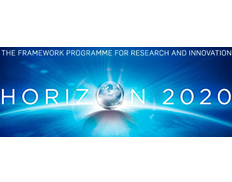Print

SMILE - SMall Innovative Launcher for Europe
Details
Locations:Belgium, Denmark, Germany, Greece, Netherlands, Norway, Romania, Spain
Start Date:Jan 1, 2016
End Date:Dec 31, 2018
Contract value: EUR 4,058,642
Sectors: Research & Innovation, Transport
Description
Programme(s): H2020-EU.2.1.6. - INDUSTRIAL LEADERSHIP - Leadership in enabling and industrial technologies – Space
Topic(s): COMPET-02-2015 - Independent access to space
Call for proposal: H2020-COMPET-2015
Funding Scheme: RIA - Research and Innovation action
Grant agreement ID: 687242
Objective:
Current launchers (ARIANE6 and VEGA C) will guarantee Europe’s independent access to space for the high-end satellite market. These launchers however are significantly less attractive for classes of smaller satellites.
The SMILE initiative therefore addresses reliable, affordable, quick and frequent access to space for the emerging market of small satellites up to 50 kg, fulfilling the needs from the European space RTD community and commercial initiatives to put satellites into preferred orbits within a preferred time window. Herewith a market niche is addressed, which is projected to grow significantly in the coming decades and presently lacks availability of a European launcher.
The project focuses on research and innovation to obtain European solutions enabling the development and realization of such a launcher system. Main objectives are to:
• develop a concept for an innovative, cost-effective European launcher system for small satellites (target price below 50.000 Euro/kg)
• design a Europe-based ground facility for these launcher systems
• increase the Technology Readiness Level of several critical technologies required for such a launcher including the development and demonstration of component prototypes
• create a roadmap defining the development plan for the launcher system from a technical operational and economical perspective
These objectives are achieved through combined research into a novel and innovative launcher system following a multidisciplinary concurrent engineering design and optimization approach. The overall design and development process encompasses technology and process advances aiming at cost reduction, such as series production, re-usability, and the applicability of European industrial grade components. The consortium is composed of organizations in relevant fields from eight European countries, from well-established and experienced SMEs to young and innovative start-ups.

